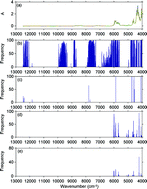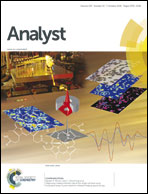A new spectral variable selection pattern using competitive adaptive reweighted sampling combined with successive projections algorithm
Abstract
The competitive adaptive reweighted sampling-successive projections algorithm (CARS-SPA) method was proposed as a novel variable selection approach to process multivariate calibration. The CARS was first used to select informative variables, and then SPA to refine the variables with minimum redundant information. The proposed method was applied to near-infrared (NIR) reflectance data of nicotine in tobacco lamina and NIR transmission data of active ingredient in pesticide formulation. As a result, fewer but more informative variables were selected by CARS-SPA than by direct CARS. In the system of pesticide formulation, a multiple linear regression (MLR) model using variables selected by CARS-SPA provided a better prediction than the full-range partial least-squares (PLS) model, successive projections algorithm (SPA) model and uninformative variables elimination-successive projections algorithm (UVE-SPA) processed model. The variable subsets selected by CARS-SPA included the spectral ranges with sufficient chemical information, whereas the uninformative variables were hardly selected.


 Please wait while we load your content...
Please wait while we load your content...